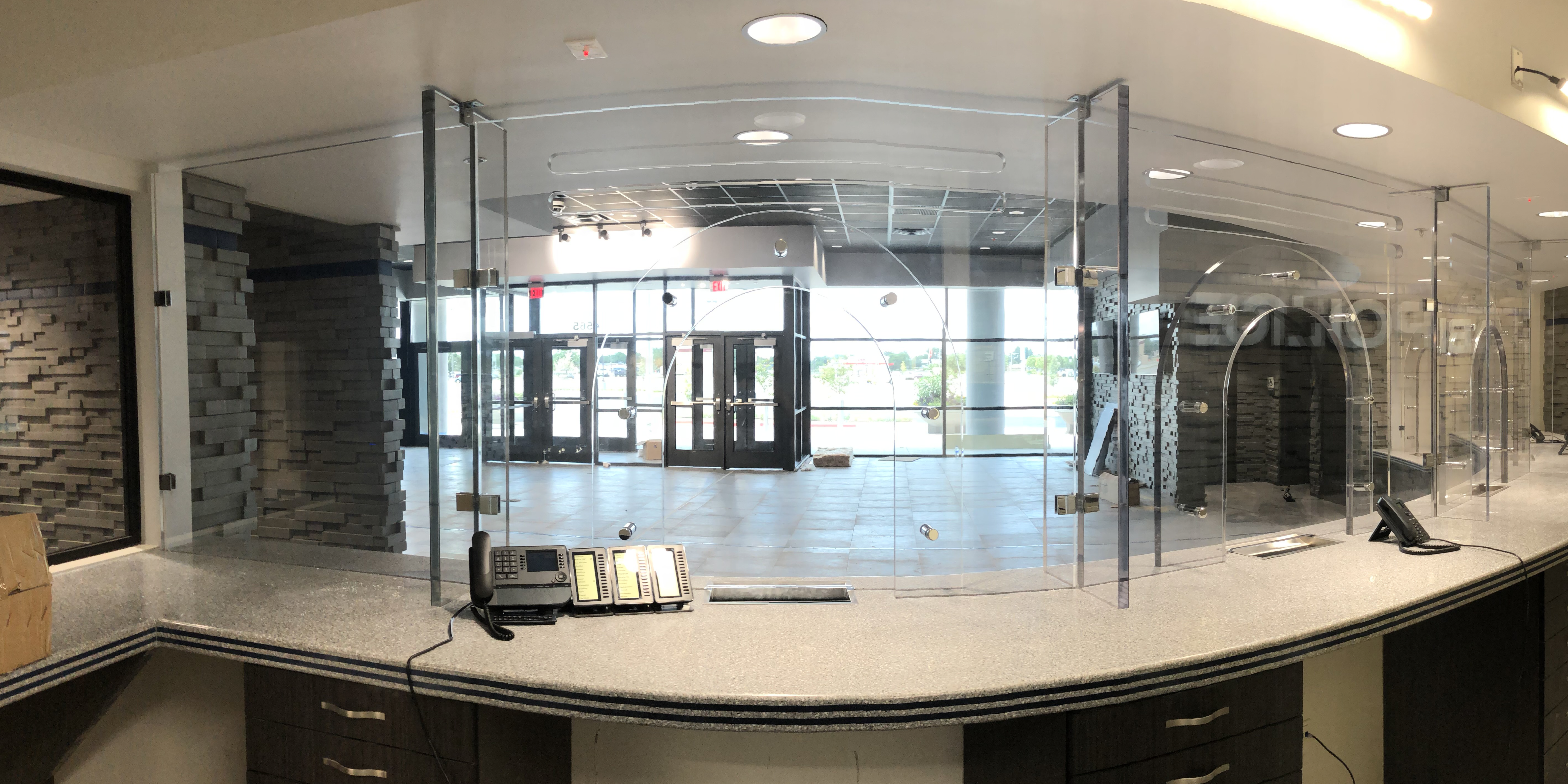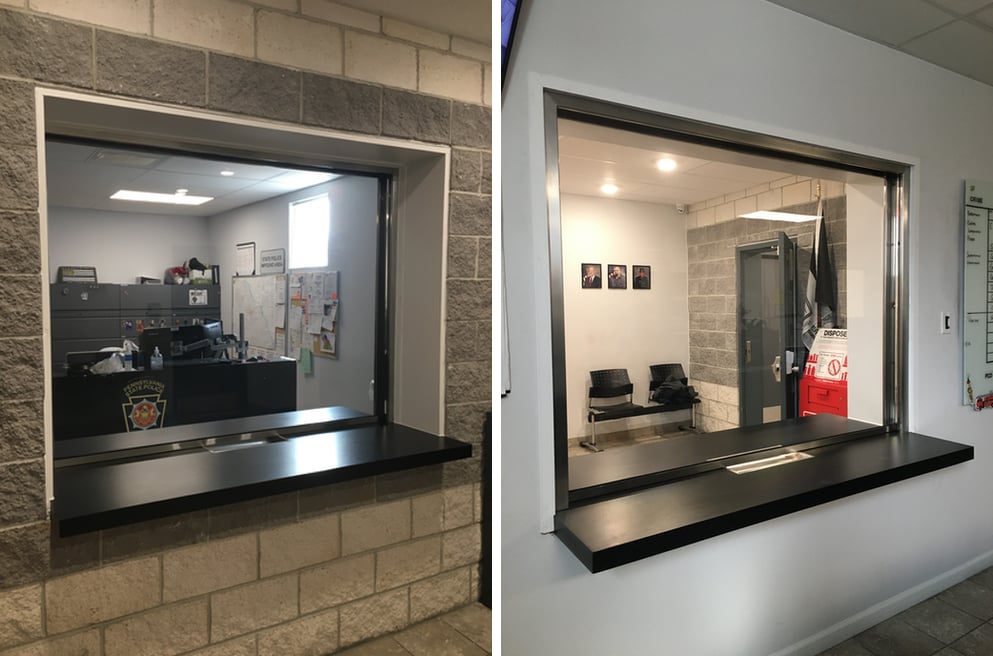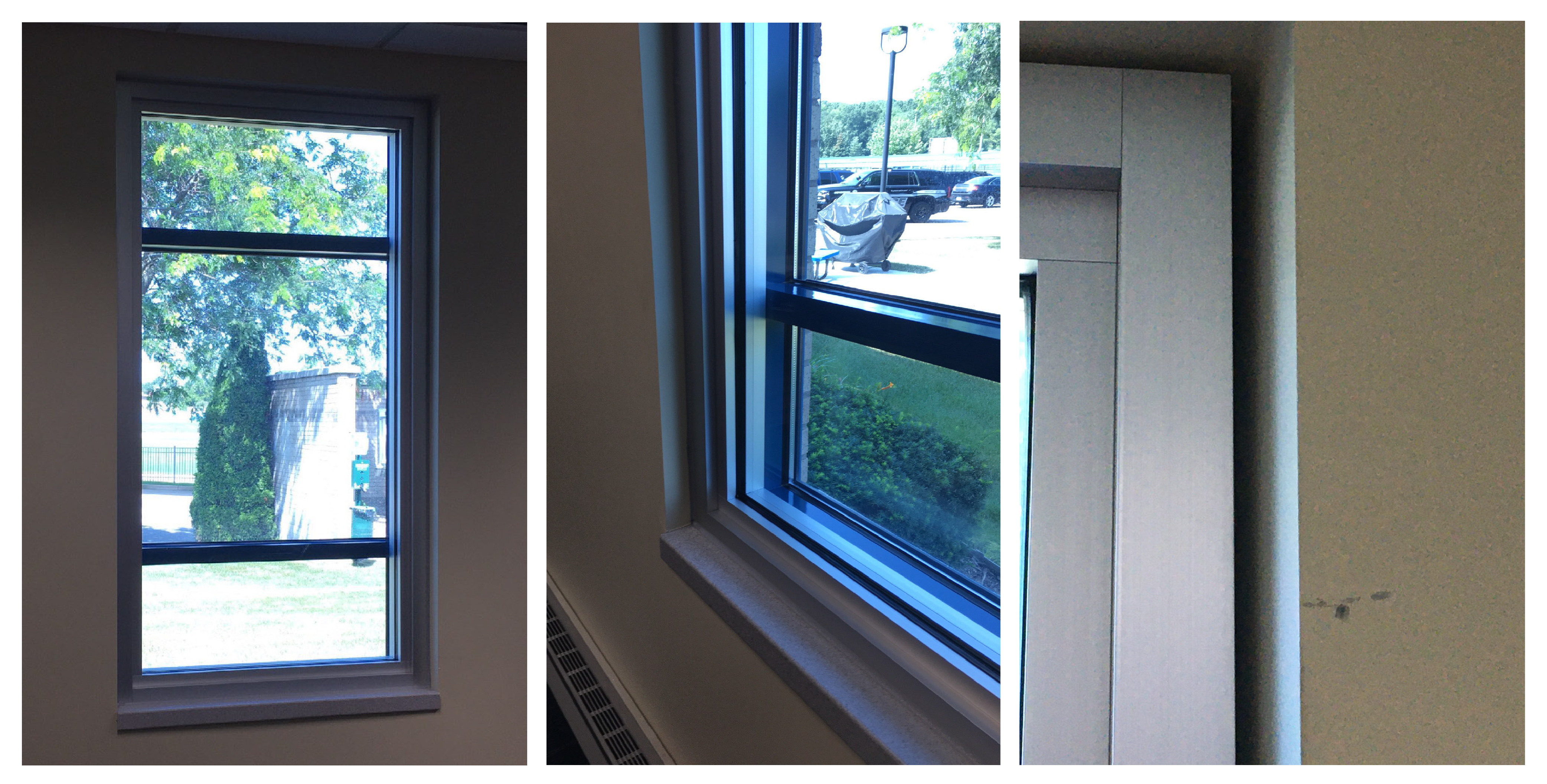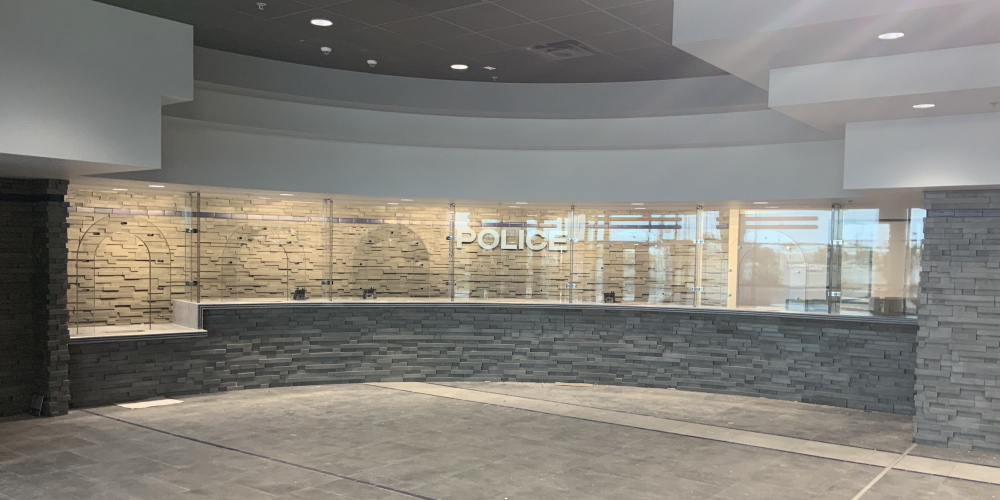Modern police station design poses unique security challenges. Police stations need to be accessible to the community, but are uniquely hazardous locations. It isn't just the nature of the job, which can include restraining dangerous individuals or attempting to assist people in the midst of a mental health or other crisis.
Police are also increasingly targeted for attack and violence. These can be chaotic attacks where an angry suspect or emotionally disturbed individual lashes out. Or they can be coldly pre-mediated attacks: groups with entirely incompatible ideologies or motivations (for example anti-government extremists and street-level criminals) often agree that the police are their enemies.
The "Systems Approach" Ballistic Building Security in a Nutshell
A "Systems" approach to ballistic building security doesn't just focus on individual elements (e.g., swapping out this window for bullet-resistant glass, replacing that door with a ballistic equivalent, etc.). This is because, all too often, people treat ballistic safety and security as an "add-on" to an existing situation.
For example, the layperson takes it as an article of faith that wearing a bulletproof vest—or putting a bulletproof backpack on their child—keeps them safe. But law officers and security professionals understand that a "bulletproof" vest doesn't make anyone "bulletproof." It's a vest. It only protects a portion of the body, stopping specific calibers. And those bullets don’t magically disappear: Officers shot while wearing standard concealment vests describe it as feeling like being hit with a sledgehammer.
But those officers do survive. Bullet-resistant vests, without a doubt, save lives in situations where officers are shot. But in terms of overall safety and survival, the vest is one part of a System of measures that are part of a solution that improves officer safety and survival.
A Systems Approach to ballistic security is similar to the "All-Hazards" approach to risk mitigation advised by the Department of Homeland Security. The Systems Approach focuses on attacker-specific security and threat response and looks to mitigate those threats with a comprehensive system of physical security measures.
The Systems Approach to Modern Police Station Design
In a police station, a Systems Approach to ballistic security brings together many components to maximize officer safety and survival without bogging them down or decreasing their accessibility to the community. Applying a Systems Approach to modern police station design starts with clearly identifying threats and vulnerabilities specific to police stations.
The primary threat to a police station is an ambush attack (either planned or spur-of-the-moment). Police are armed, trained, and equipped with protective equipment. When they are on a call or on patrol, they are also on alert. In a fair fight, they clearly have the advantage. The element of surprise is what the attacker will attempt to leverage. The station is the place where officers—in their element and among fellow officers—will naturally let their guard down. Once inside, they are protected by block walls and procedures. Therefore, the point of greatest vulnerability is the transition zone between being on patrol and on alert and the safety of the station:
- the main entrance/lobby
- secondary entrances/parking lots
- exterior windows
Unfortunately, easy access to firearms greatly increases this zone’s size and vulnerability. An officer standing in an administrative office far from the lobby and surrounded by armed, sworn officers probably feels pretty safe—but if she's standing next to a window across the street from a parking garage, she's as exposed as she would be on the sidewalk. Similarly, “desk duty” is the cliché low-risk role—unless someone rushes in with a pistol to create havoc.
Examples of Police Station Security Upgrades
Police station security upgrades often use UL Level 3 glazing (rated to stop multiple shots from any kind of pistol) but may go as high as Level 4 or 5 (rated to stop bullets fired from high-powered rifles and tactical/assault/sniper rifles). These systems will usually include similarly rated ballistic fiberglass reinforcement panels in surrounding counters and walls, as well as ballistic doors. Exterior windows are increasingly being reinforced with Level 4 or 5 glazing. This provides protection from bullets and will also deter prolonged attempts at forced entry. They even offer some blast resistance.
Modern police station designs increasingly include a ballistic barrier at the main entrance. This usually takes the form of a ballistic "teller line" (so-called because it was originally designed to protect bank tellers):

This teller line was part of a significant renovation for a new law enforcement center in Texas. Architectural choices—like stone finish on the walls—reduced the need for ballistic fiberglass reinforcement in the walls.
In other situations, such as a security retrofit on a smaller existing station, a basic transaction window may be preferable. This was the case for the Pennsylvania State Police, who opted for a custom version of TSS's standard Natural Voice Rail (NVR) transaction window. Once again, block wall construction reduced the need for reinforcing fiberglass ballistic panels.

Replacing exterior windows with bulletproof glass for police stations can be a major endeavor. Ballistic glazing suitable to stop shots from rifles and tactical weapons is usually between 1 and 1.5 inches thick, and will not fit in conventional frames. One solution, seen below, is to backglaze existing police station windows, instead of replacing them.

Do you have questions about police station security upgrades? Contact our ballistic security experts whenever you’re ready.

